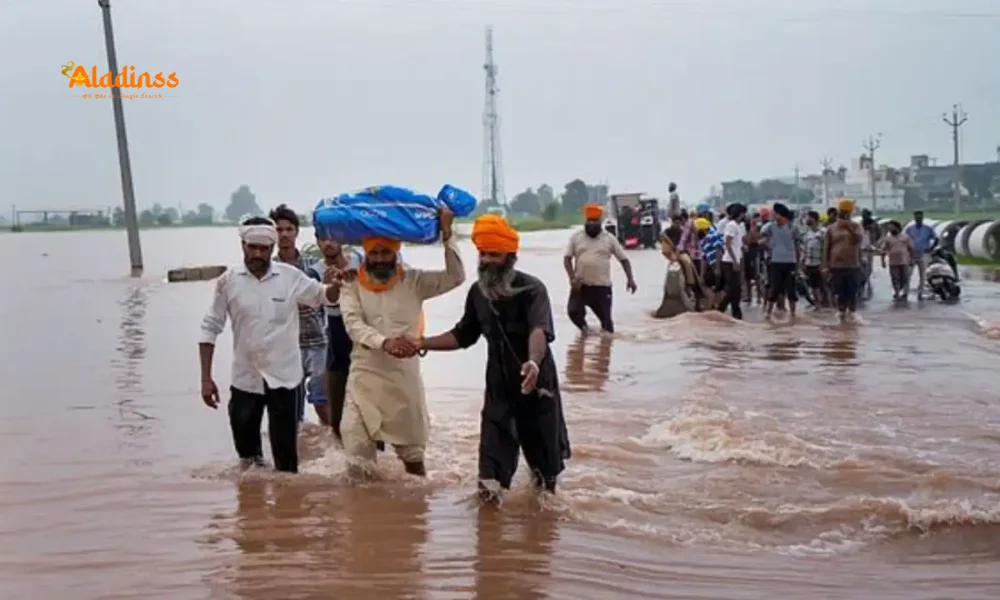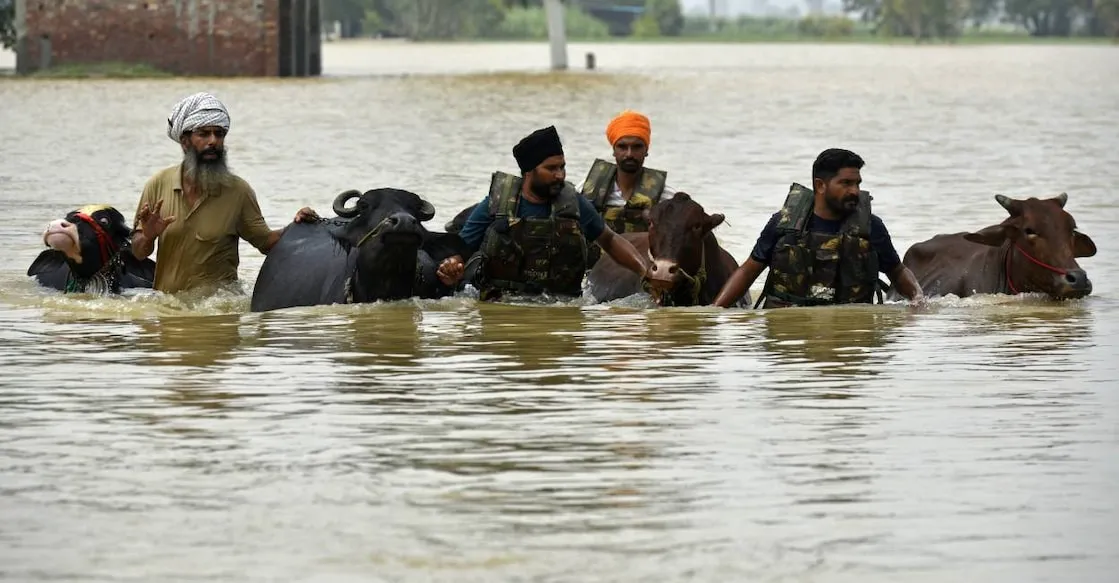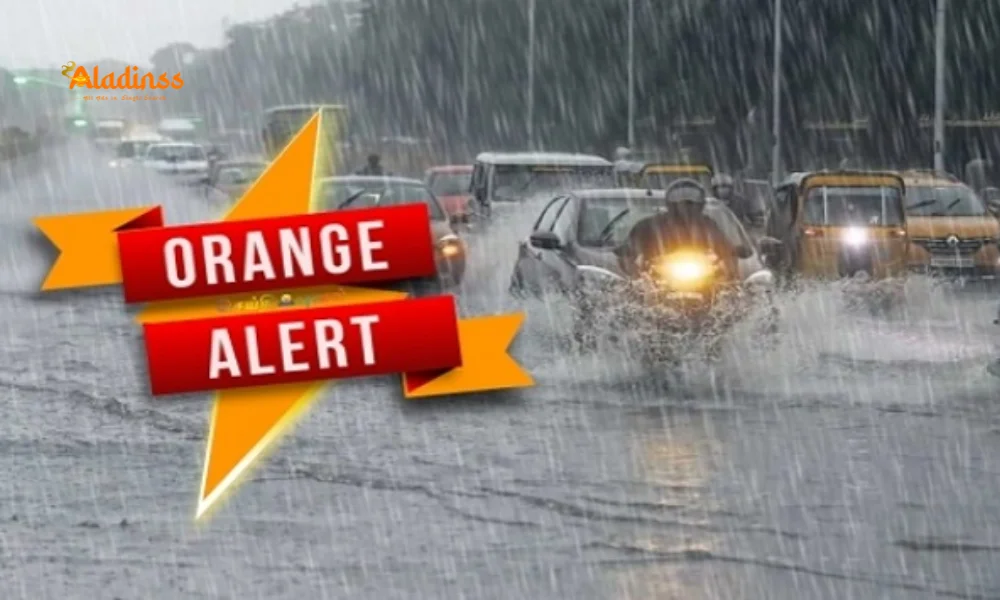Punjab Floods 2025: 29 Dead in Worst Deluge in Four Decades

Punjab Floods 2025: 29 Dead in Worst Deluge in Four Decades
Punjab is grappling with its most severe flooding crisis in nearly four decades, with 29 lives lost across 12 heavily impacted districts. The catastrophic floods, triggered by relentless monsoon rains and overflowing rivers, have wreaked havoc on communities, submerged agricultural lands, and displaced thousands of residents. The Punjab government’s data from August 1 to September 1, 2025, paints a grim picture of the disaster, with the Ravi, Beas, and Sutlej rivers swelling due to heavy rainfall in the neighboring states of Himachal Pradesh and Jammu and Kashmir. This marks the worst flooding event in the state since the devastating floods of 1988.
Fatalities and Missing Persons
The human toll of the floods has been staggering. According to official reports, Pathankot district recorded the highest number of fatalities, with six deaths attributed to the swollen Ravi River. Three deaths each were reported in Hoshiarpur, Amritsar, Ludhiana, Mansa, Rupnagar, and Barnala districts. Additionally, one fatality was recorded in each of the districts of Bathinda, Gurdaspur, Patiala, Mohali, and Sangrur. Beyond the confirmed deaths, three individuals remain missing in Pathankot following flash floods that struck the region last week. A senior state government official noted that the reported deaths include incidents of electrocution, house collapses, and drownings caused by the flooding.
The office of the Director of Land Records in Jalandhar, serving as the nodal agency for the state’s flood control room, has been diligently compiling daily reports. These reports detail the estimated losses to agriculture and livestock, alongside updates on evacuations, deaths, and missing persons across the 1,044 affected villages. The data underscores the widespread devastation caused by the floods, with rescue and relief operations ongoing to mitigate further loss of life.

Widespread Impact on Communities
The floods have affected an estimated 2.56 lakh people across Punjab, with Gurdaspur bearing the brunt of the disaster. In Gurdaspur alone, 1.45 lakh individuals across 321 villages have been impacted. Amritsar follows with 35,000 affected people in 88 villages, Ferozepur with 24,015 in 76 villages, Fazilka with 21,562 in 72 villages, Pathankot with 15,053 in 82 villages, Kapurthala with 5,650 in 115 villages, and Hoshiarpur with 1,152 in 94 villages. The scale of displacement and disruption has overwhelmed local authorities, who are working tirelessly to provide relief and support to affected communities.
The Punjab government has evacuated 15,688 people from flood-hit areas, with 7,144 individuals currently housed in 129 relief centers established across the state. These centers provide essential supplies, including food, water, and medical assistance, to those displaced by the floods. The government’s efforts are supported by the State Disaster Response Force (SDRF), 20 teams of the National Disaster Response Force (NDRF), 10 columns of the Indian Army, and 35 helicopters deployed for rescue and relief operations.
Agricultural and Economic Losses
The floods have dealt a severe blow to Punjab’s agricultural sector, particularly during the critical paddy-growing season. Official data indicates that 2.32 lakh acres (94,061 hectares) of farmland have been submerged, resulting in significant financial losses for farmers. Amritsar has seen the highest agricultural damage, with 56,834 acres affected, followed by Mansa (42,020 acres), Kapurthala (36,902 acres), Tarn Taran (29,363 acres), Ferozepur (27,754 acres), Hoshiarpur (14,754 acres), and Pathankot (6,034 acres). The Gurdaspur district administration has yet to complete its preliminary survey due to high water levels, delaying an accurate assessment of losses in the region.
The inundation of paddy fields, just weeks before the harvest season, threatens to exacerbate food security concerns and drive up prices for consumers. Farmers, who rely heavily on the paddy crop for their livelihoods, face an uncertain future as they grapple with the loss of their primary source of income. Additionally, the floods have caused significant livestock losses, though exact figures are pending until the floodwaters recede. Infrastructure damage, including roads, bridges, and homes, is also expected to be substantial, further compounding the economic toll of the disaster.
Causes of the Floods
The primary cause of the flooding is the heavy rainfall in the catchment areas of the Ravi, Beas, and Sutlej rivers, located in Himachal Pradesh and Jammu and Kashmir. These rivers, swollen by monsoon rains, have overflowed their banks, inundating vast areas of Punjab. The situation has been exacerbated by the release of excess water from dams in neighboring states, which has increased water flow into Punjab’s rivers. The scale of the flooding has drawn comparisons to the catastrophic floods of 1988, which caused widespread destruction and loss of life across the state.
Climate change has also played a role in intensifying the monsoon rains, leading to more frequent and severe flooding events. Experts warn that Punjab’s vulnerability to such disasters is increasing due to changing weather patterns and inadequate infrastructure to manage extreme rainfall. The state’s flat topography and extensive river network make it particularly susceptible to flooding, necessitating robust flood management strategies to protect lives and livelihoods.
Government Response and Relief Efforts
The Punjab government has mobilized a comprehensive response to the crisis, deploying multiple agencies to conduct rescue and relief operations. The SDRF, NDRF, Indian Army, and other forces are working round-the-clock to evacuate stranded residents and provide essential supplies. The use of 35 helicopters has been critical in reaching remote and heavily flooded areas, ensuring that aid reaches those in need. The government has also established 129 relief centers to accommodate displaced individuals, offering shelter, food, and medical care.
Chief Minister Bhagwant Mann has urged the central government to release ₹60,000 crore in pending state funds to support recovery efforts. In a letter to Prime Minister Narendra Modi, Mann highlighted the scale of the disaster, noting that nearly 3 lakh acres of paddy crops have been submerged and that rural families have suffered significant livestock losses. He criticized the inadequacy of the State Disaster Response Fund (SDRF) norms, arguing for higher compensation to address the magnitude of the destruction.
Challenges in Assessing Losses
Assessing the full extent of the damage remains a challenge for authorities, particularly in Gurdaspur, where high water levels have delayed surveys. The government has ordered a special girdawari (crop damage assessment) to ensure accurate data collection and timely compensation for affected farmers. However, the ongoing flooding and logistical challenges in reaching remote areas have slowed the process. State officials have emphasized that a comprehensive assessment of livestock and infrastructure losses will only be possible once the floodwaters recede.
The floods have also disrupted transportation and communication networks, further complicating relief efforts. Roads and bridges in several districts have been washed away or damaged, isolating communities and hindering the delivery of aid. The government is coordinating with central forces to restore connectivity and ensure that relief materials reach all affected areas.
Looking Ahead
As Punjab battles this unprecedented flooding crisis, the focus remains on saving lives and providing immediate relief to affected communities. The government’s efforts to evacuate residents and distribute aid are critical steps in addressing the immediate needs of those impacted. However, the long-term recovery process will require significant investment in rebuilding infrastructure, compensating farmers, and strengthening flood defenses to prevent future disasters.
The floods of 2025 serve as a stark reminder of the challenges posed by climate change and the need for proactive measures to enhance resilience. For now, Punjab’s residents and authorities are united in their efforts to navigate this crisis, with hopes of restoring normalcy to the flood-ravaged state.
Comment / Reply From
No comments yet. Be the first to comment!











